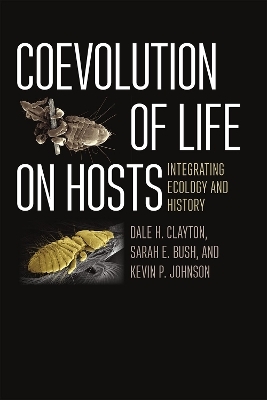
Coevolution of Life on Hosts
Integrating Ecology and History
Seiten
2015
University of Chicago Press (Verlag)
978-0-226-30227-0 (ISBN)
University of Chicago Press (Verlag)
978-0-226-30227-0 (ISBN)
For most, the mere mention of lice forces an immediate hand to the head and recollection of childhood experiences with nits, medicated shampoos, and traumatic haircuts. But for a certain breed of biologist, lice make for fascinating scientific fodder, especially enlightening in the study of coevolution. In this book, three leading experts on host-parasite relationships demonstrate how the stunning coevolution that occurs between such species in microevolutionary, or ecological, time generates clear footprints in macroevolutionary, or historical, time. By integrating these scales, Coevolution of Life on Hosts offers a comprehensive understanding of the influence of coevolution on the diversity of all life. Following an introduction to coevolutionary concepts, the authors combine experimental and comparative host-parasite approaches for testing coevolutionary hypotheses to explore the influence of ecological interactions and coadaptation on patterns of diversification and codiversification among interacting species.
Ectoparasites-a diverse assemblage of organisms that ranges from herbivorous insects on plants, to monogenean flatworms on fish, and feather lice on birds-are powerful models for the study of coevolution because they are easy to observe, mark, and count. As lice on birds and mammals are permanent parasites that spend their entire lifecycles on the bodies of their hosts, they are ideally suited to generating a synthetic overview of coevolution-and, thereby, offer an exciting framework for integrating the concepts of coadaptation and codiversification.
Ectoparasites-a diverse assemblage of organisms that ranges from herbivorous insects on plants, to monogenean flatworms on fish, and feather lice on birds-are powerful models for the study of coevolution because they are easy to observe, mark, and count. As lice on birds and mammals are permanent parasites that spend their entire lifecycles on the bodies of their hosts, they are ideally suited to generating a synthetic overview of coevolution-and, thereby, offer an exciting framework for integrating the concepts of coadaptation and codiversification.
Dale H. Clayton is professor of biology at the University of Utah. He is coeditor of Host-Parasite Evolution: General Principles and Avian Models, coauthor of The Chewing Lice: World Checklist and Biological Overview, and inventor of the LouseBuster;. He lives in Salt Lake City, UT. Sarah E. Bush is an assistant professor of biology at the University of Utah. She lives in Salt Lake City, UT. Kevin P. Johnson is an associate research professor with the Illinois Natural History Survey at the University of Illinois at Urbana-Champaign. He is coauthor of The Chewing Lice: World Checklist and Biological Overview. He lives in Champaign, IL.
| Erscheint lt. Verlag | 5.1.2016 |
|---|---|
| Reihe/Serie | Interspecific Interactions |
| Sprache | englisch |
| Maße | 16 x 23 mm |
| Gewicht | 510 g |
| Themenwelt | Naturwissenschaften ► Biologie ► Evolution |
| Naturwissenschaften ► Biologie ► Ökologie / Naturschutz | |
| Naturwissenschaften ► Biologie ► Zoologie | |
| ISBN-10 | 0-226-30227-X / 022630227X |
| ISBN-13 | 978-0-226-30227-0 / 9780226302270 |
| Zustand | Neuware |
| Haben Sie eine Frage zum Produkt? |
Mehr entdecken
aus dem Bereich
aus dem Bereich
Komplette Neuübersetzung. Mit einem Nachwort von Josef H. Reichholf.
Buch | Hardcover (2018)
Klett-Cotta (Verlag)
48,00 €
Wie die Vernichtung der Arten unser Überleben bedroht - Der …
Buch | Softcover (2023)
Penguin (Verlag)
15,00 €


